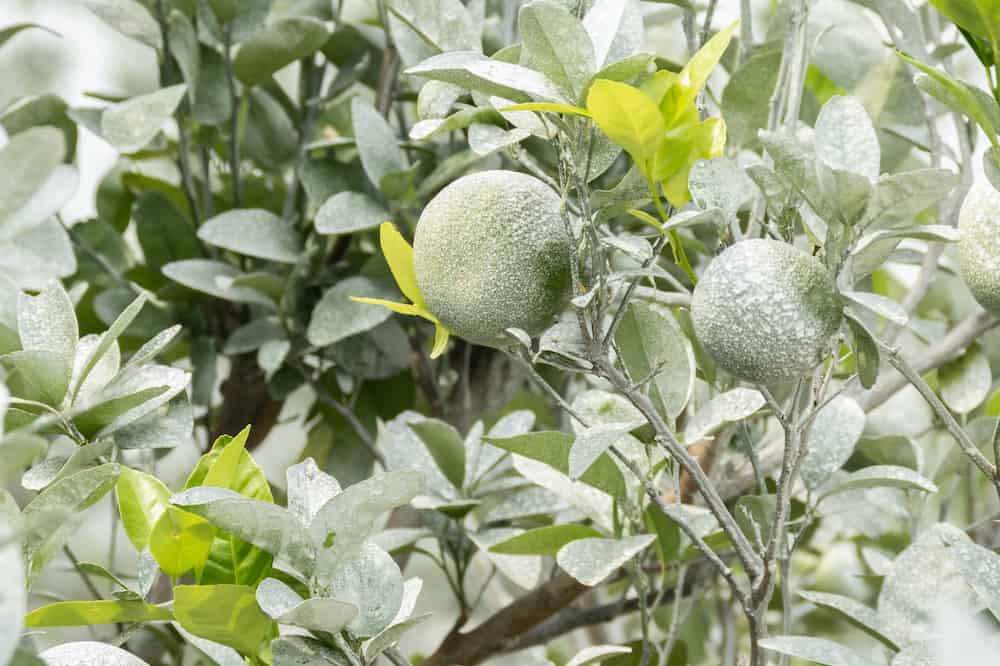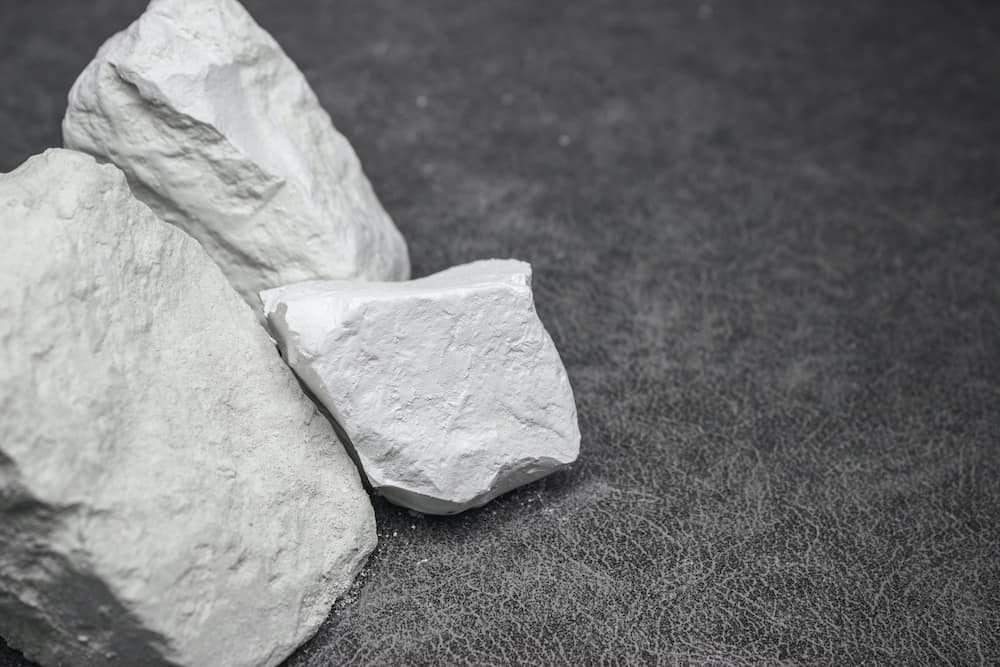Here we explain what garden plants need lime. It works like magic on many plants by reducing the acidity of the soil, thereby increasing pH levels.
For those of you not familiar with the pH level, it describes how much acid or alkaline is in your soil.
If there’s too much acidity in the soil where you live, along with high levels of other toxic materials such as aluminum, garden plants will struggle to get the nutrients they require to thrive and survive.
With the pH, it’s possible to calculate how much lime is needed to reduce the acidity so your selection of plants will flourish.
Since not all plants require lime, we’ve put together this handy guide to give you an idea of what garden plants need lime and what doesn’t, as well as how to go about the liming process.
What Garden Plants Need Lime and What Doesn’t?
To ensure that you are not doing more harm to your plants than good, you must make sure they really require lime.
Plants That Need Lime
If you’ve decided to grow a vegetable patch, then the kind of plants that will benefit from lime include legumes such as peas and broad beans.
Other popular homegrown vegetables that benefit from lime include onions, garlic, parsnips, asparagus, and English spinach.
Fruit trees, including apple trees, are also far less likely to yield abundant fruits and reach their full potential if the soil is too acidic.
In terms of flowers, you might consider adding lime to decorative and ornamental style gardens populated with variants of gypsophila, delphiniums, and buddleia.
Shrubs that prefer acidic soils are American Holly, sweet bay magnolias, and mountain laurel.
Plants That Do Not Need Lime
You don’t want to discover the hard way that your crops and flower beds aren’t suitable for lime.
Unfortunately, there are several plants that will react badly to lime. For instance, you should never add lime to sweet potatoes and regular potato crops.
Also, you should not consider adding lime if you are growing capsicums or tomatoes.
Many types of popular berries also prefer a more acidic soil environment to flourish, so they won’t react favorably if you add lime.
Among those, we’re singling out blueberry bushes, strawberries, and raspberries.
The same can also be said for grapes which again, thrive in more acidic conditions.
In terms of flowers that don’t react well to lime, there are plenty so you should most definitely err on the side of caution.
We’re talking about species such as magnolia, azalea, Japanese maples, daphne, and rhododendrons.
What if Your Plant Isn’t on the List?
Do some research, and ask at your local garden center, or you may do the following:
Soil pH Testing
We also always recommend that you first perform soil pH test to be confidently assured that lime is necessary. There are test kits available which are easy to use.
Also, if you’re planting what are known as perennial plants, such as lawn grasses, shrubs, and trees, then we recommend you to check the level of acidity in your soil.
If it’s too high, then lime should be added.
In terms of the accepted levels to look out for, a pH level of 7.0 is considered neutral.
If your soil has a measurement above 7.0, it denotes it’s alkaline whereas under 7.0 is acid.
If you’re planning to make changes and adjustments to your garden, perhaps by designing a new area to integrate with existing established plants or adding a vegetable plot, always re-test your soil’s pH level.
That way, you will have a better chance of success when it comes to the healthy and abundant growth of any fruit and vegetable crops you plant.
Testing itself can be carried out at any time but if it’s carried out within three months of adding another organic matter such as fertilizer, it could skew your results and be misleading.
Identify the Plant’s Natural Habitat
Another way of determining the soil preference of the plants you’re planning to grow is to reference their natural habitat.
Plants from the Rocky Mountains for example and the high Sierras or other heavy granite-based terrains won’t tolerate lime at all.
On the other hand, plants from the western plains are far more lime-tolerant.
These days, a lime deficiency is considered to be one of the principal factors contributing to poor growth, particularly in Easter gardens.
One of the challenges is that lime lovers divide flower families so again, please do your research if you want your garden to flourish.
The Lime Application Process
Now, if your plants require lime, here are the things that you should be familiar with:
How to Add Lime
To go about the lime application process, here are the things to keep in mind:
1. When to Apply
It’s standard procedure for best gardening practices to add lime during the winter months, especially for your annual crops.
Lime should be added just prior to digging the soil so that the lime can bed down and take effect over the harsh winter months and not cause any damage to young, winter vegetables.
2. Effectivity
Do note that lime can take years to have any effect, especially if it’s just applied to the surface around already established plants and shrubs in your garden, so you should be regularly tilling and sowing the soil.
3. Frequency
It’s important to note that lime is not a fertilizer and shouldn’t be used as such.
Its principal purpose is to raise the pH level of your soil. That’s why it enables some plants to positively thrive and flourish whereas, for others, it makes them desperately unhappy!
We all want a garden full of happy plants at the end of the day, don’t we? If you remove the acidity they crave from the soil surrounding them, they’ll struggle to survive.
They definitely won’t be delivering an abundance of beauty which is what you’re striving for.
It shouldn’t be necessary to add lime more frequently than every two years.
4. Liming Materials
In today’s guide to what garden plants need lime, we thought it would additionally be beneficial to take a look at how to add lime and specifically what materials are required.
It’s normally added in the form of a limestone product commonly referred to as “garden lime”.
This contains an ingredient known as calcium carbonate and is recommended because it’s easy to spread and widely available to purchase.
Other options include calcified seaweed and ground chalk.
Ground magnesium limestone, known as “dolomite lime”, which is incredibly rich in both magnesium carbonate and calcium carbonate can also be used.
It’s an excellent option if the soil where you live is lacking in magnesium and can provide a much-needed source of plant nutrition.
Hydrated lime, the kind that is typically sold for use by the building trade, is also acceptable to use.
This is a much finer powder. Its benefit is that it works quickly but on the flip side, it can irritate your eyes and cause damage to the skin if not handled correctly.
5. Method of Application
If you are applying more than 0.5kg per square meter (14 ¾ oz per square yard), we suggest that you dig half of the lime into the soil and sprinkle the rest on the surface after digging.
If you’re applying much less than that amount, the best action is to dig the entire amount in.
It is, however, possible to sprinkle lime on the surface around your plants and flowerbeds if digging isn’t a practical consideration.

6. Quantity
In terms of the recommended quantities to apply, that’s likely to be determined by the type of soil that you have.
Clay content in soil can resist changes in pH, referred to as buffering capacity. That means more lime will be required to be effective.
We’ve made some recommendations below of the quantity of garden lime you’d require based on certain soil types and areas.
This is based on using a commonly available calcium carbonate product that you should be able to purchase in any local gardening center.
For the majority of most garden plants, the best all-round pH is considered to be pH6.5, which is what the below calculations should deliver.
Clay Soil
| Original pH of Soil | Kilograms per sqm | Ounces per sqyd |
| 6.0 | 0.6 | 17 ¾ |
| 5.5 | 1.0 | 29 ½ |
| 5.0 | 1.4 | 41 ¾ |
| 4.5 | 1.8 | 53 |
Loam Soil
| Original pH of Soil | Kilograms per sqm | Ounces per sqyd |
| 6.0 | 0.5 | 14 ¾ |
| 5.5 | 0.8 | 23 ½ |
| 5.0 | 1.2 | 35 ¼ |
| 4.5 | 1.5 | 44 ¼ |
Sandy Soil
| Original pH of Soil | Kilograms per sqm | Ounces per sqyd |
| 6.0 | 0.4 | 11 ¾ |
| 5.5 | 0.7 | 20 ½ |
| 5.0 | 1.0 | 29 ½ |
| 4.5 | 1.3 | 38 ¼ |
Cautions and Problems
Please be sure to take good care when handling builders’ lime in particular.
This type of hydrated lime can cause irritation to the skin and eyes so we recommend that you wear safety goggles and protective gloves when handling this substance.
That way, you can protect against any potential adverse reaction.
You may find that your plants suffer from a disease known as clubroot if your soil contains insufficient lime levels.
Other plant nutrient deficiencies can also be as a result of too much acid in your soil or even too alkaline conditions.
What Garden Plants Need Lime
Lime helps reduce the acidic levels in soil, allowing them to thrive better, but you must always check your soil’s pH level whenever you intend planting something new. That way, you can be sure that the environment is appropriate for the specific plants.
Just as the best results are obtained by lime-loving plants when special consideration is given to the soil conditions they’re in, the same is true for acid-loving plants.
It’s a good idea to keep all your acidic-loving plants together in one location so that it’s easier to administer lime without damaging any of your other plants and shrubs that prefer different conditions to thrive.
So wherever practical, try to keep them together in one bed or neighboring beds.
Learn about what to do in areas of your garden with poor soil and how to amend it.


Do willow trees prefer an acidic soil as ours does not grow
Had some maple trees removed this spring and stumps Ground down producing a lot of chips tree company recommended I add lime?